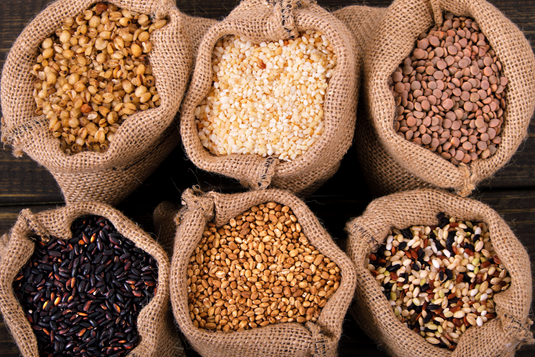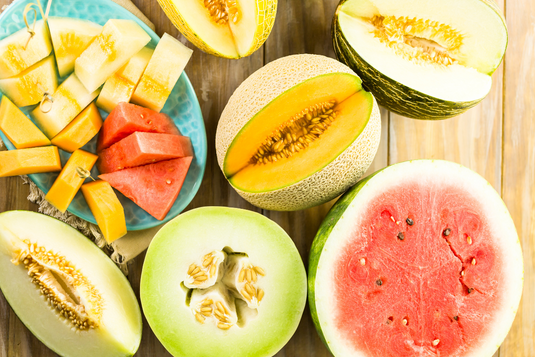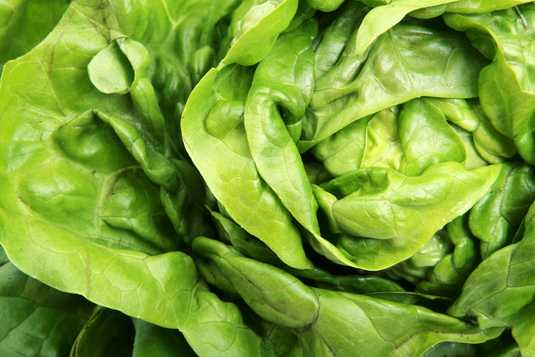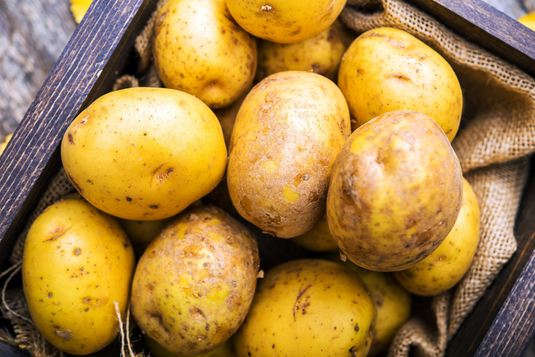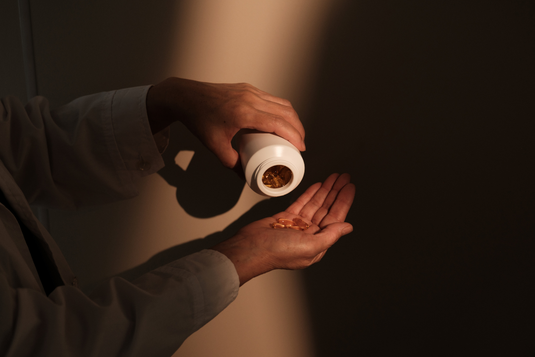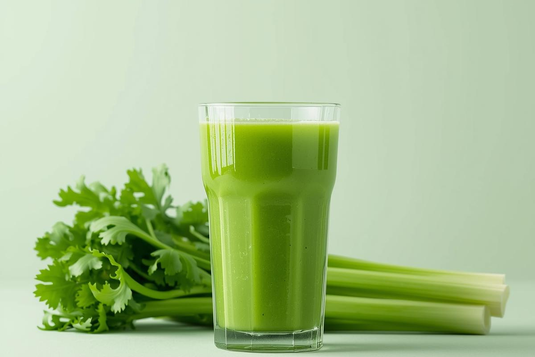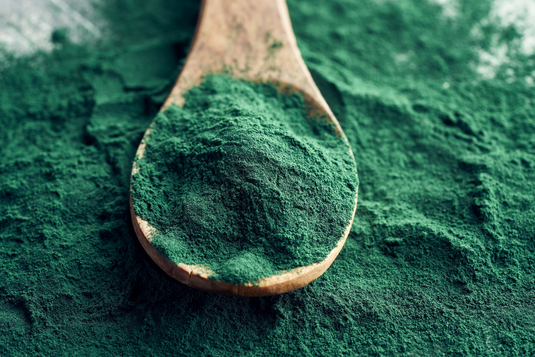All grains (except millet and oats)
If you're asking yourself, "Why should I avoid even gluten-free grains?", you're right. You should not believe the popular claim that they cause inflammation and are an unnecessary source of carbohydrates. Gluten-free grains do not feed pathogens or cause inflammation. Needless to worry that foods such as millet, quinoa, brown rice or oats feed bacteria such as streptococcus , non-productive bacilli in the gut or viruses such as Epstein-Barr and herpes simplex .
There are other reasons to cut out all grains besides millet and oats when you're serious about cleansing. For one thing, grains can be too easy a food to rely on and fill our plates and stomachs with instead of healthier foods like green leafy vegetables and fruits. There is a high probability that we will not have breakfast with 2-3 apples or a banana because we have preferred cereal. While grains are nutritious, they don't offer the healing phytochemicals, antioxidants, and micronutrients of a bowl of berries, two apples, or a banana. Most importantly, grains do not offer antiviral, antibacterial compounds—those compounds found in fruits, celery stalks, green leafy vegetables, greens, and seaweed. Cereals fill us up, but other foods help us improve our health faster.
There is another, more important reason to avoid grains - because of the way they interact with fat. We don't tend to eat the grains without radical fats or enough time between them. Just think - oatmeal with peanut or almond butter, avocado toast, muesli with milk, protein bars, chicken sandwiches, pasta with olive oil. It's very rare to eat a grain as simply as, say, quinoa with fat-free steamed vegetables. Even when we do not include fat in the breakfast or meal, it is shortly after we have eaten a high-fat meal and the fat has not yet left the body when we already have a grain meal - even if hours have passed between the two meals. A breakfast of yogurt or eggs, for example, can still be digested by the time we finish our lunch of quinoa salad. Why is this a problem? Insulin resistance. ( By the way, quinoa is a healthy grain, although it is more difficult to digest than millet and oats. It is abrasive to the lining of the intestines, which means it can bother people with diseases of the intestinal tract. In order for these cleanses to be as gentle and healing as possible for sensitive people, you won't see quinoa recommended as a staple in cleanse articles.Let's also address the debate about whether quinoa is a grain or a seed.We can take it both ways, most grains foods are seeds - that's why sprouts can be prepared from them. )
In many places in the information from the Healer Medium you will find the term radical fats. This is when the majority of a food's calories are derived from fat, whether healthy or unhealthy. (Ketogenic diets, for example, are based on radical fats.) Both radical fats and grains are digested more slowly. Fats from chicken, avocados, bone broth, nuts and seeds, oils, butter, cream, milk, etc. linger in the bloodstream as they go through the long process of absorption, sometimes taking an entire day to dissipate, if not longer. This means that fat floats in the bloodstream for hours. The complex carbohydrates in whole grains take less time to break down—they're usually gone within four to six hours, though that's still a long time—because of their density and the amount you may have eaten. This is usually taken as a positive fact, because the energy from them is burned slowly.
The problem is this: complex carbohydrates are broken down into sugars, and if at the same time there is fat in the blood, then we have fat plus sugar - the real cause of insulin resistance. Sugars bind to insulin to enter the cells and give us energy to survive and thrive. Fat interferes with this process. High blood fat prevents sugars from entering cells easily because it absorbs some of the insulin and also prevents sugars from binding to insulin before it weakens and dissipates. This causes more insulin to be produced, which weakens the pancreas, while fat in the blood clogs the liver. This can lead to blood sugar instability. For example, hemoglobin A1C may increase or you may be diagnosed with prediabetes or diabetes. So, if you're aiming for true healing, it's important to avoid grains if radical fats are present in your diet.
If you eliminate radical fats, then gluten-free grains only work in your favor. You can't get insulin resistance, although then we're back to the original disadvantage of grains: the lower level of nutrition they offer compared to fruits, fresh herbs, green leafy vegetables, vegetables and seafood, and the non-existent level of antiviral and antibacterial substances in cereals. By the way, fruits are not complex carbohydrates ( unless they are starchy like pumpkin ). The valuable sugar from the fruit enters your blood and organs quickly; many fruits are absorbed, digested and used within an hour. If you consume large amounts of fruit - for example, if you eat a bunch of bananas at one time - this absorption can take two or three hours. Either way, fruit offers the least resistance when it comes to getting sugar into the fuel cells. If you have a lot of fat in your blood, you may still have a little insulin resistance to the fruit, although not much, because the insulin will attach to the sugar in the fruit and bypass the high fat in the blood to get into the cells.
With cereals, the absorption process is much more difficult if we take radical fats together with them. Modern high-fat diets such as keto or paleo (whether plant-based or animal protein-based) have no understanding of this. They just believe that grains cause symptoms, period. What the creators of these diets fail to realize is that the symptoms of mild swelling, lightheadedness, clouded thinking, and fatigue are not the result of inflammation caused by gluten-free grains—these symptoms come from digestive problems, liver problems, or low-grade viral and bacterial infections like strep and the Epstein-Barr virus . The combination of fat plus complex carbohydrates can make these conditions worse.
People often experience digestive problems when combining free radical fats with complex carbohydrates such as grains, yet they rarely eat fat-free grains. Examples are many - macaroni and cheese, pizza (that's wheat crust plus cheese and butter), rice with butter, toast and avocado, oatmeal and peanut butter, or pulled pork with rice. The combination of fat and starch in the digestive tract puts stress on the liver and pancreas, making it harder for hydrochloric acid to break down grains in the stomach. This is because fat interferes with the power of hydrochloric acid and the liver has to produce more bile to break down fat, while complex carbohydrates prevent bile from breaking down fat. Other symptoms that can occur as a result are bloating, nausea, constipation, cramping, gastritis and intestinal inflammation, all of which are wrongly blamed on grains rather than the fat consumed with them. The symptoms of insulin resistance are similar – sweating, hot flashes, mild dizziness, erratic energy, compulsive hunger, bloating from mild water retention, and mild, intermittent tremors and shaking.
Many people do great with fats and grains together, mostly if they're younger because their systems are strong and they don't have many health-compromising factors yet. Their liver has not yet been too weakened over time by pathogens, a high-fat or high-protein diet, toxic heavy metals, or a large toxic load, so the hydrochloric acid in their stomach is still partially strong, and their pancreas is still strong enough. Just because someone isn't showing symptoms now doesn't mean there isn't a build-up of weakness in the background that can develop into a chronic problem because of a tendency to eat. Feeling that you feel good right now is not an assurance that everything is okay. For people who want to prevent problems or those who already experience chronic problems that they would like to heal, eliminating all grains other than millet and oats from the diet is one way to further restore and strengthen. Another way is to eliminate or reduce radical fats at the same time.
(Look for oat products labeled "gluten-free." Although oats are gluten-free, contamination sometimes occurs when they are grown and processed—which is why it's best to go for products grown and processed with special care.)
A third option when trying to get rid of a symptom or disease is to cut out all grains. This will give your digestive system a break and maximize the healing foods you have room for in each meal. You will notice that millet and oats are allowed on days 1 through 3 of the Original 3:6:9 Cleanse and on days 1 through 8 of the Simplified 3:6:9 Cleanse . This is done to give people who are eliminating foods from their diet for the first time some comfort foods. If you are really struggling with a condition and are still very attached to grains, our advice is to consume millets. For even greater healing, we advise you to eliminate grains entirely and try the 3:6:9 Intensive Cleanse .
